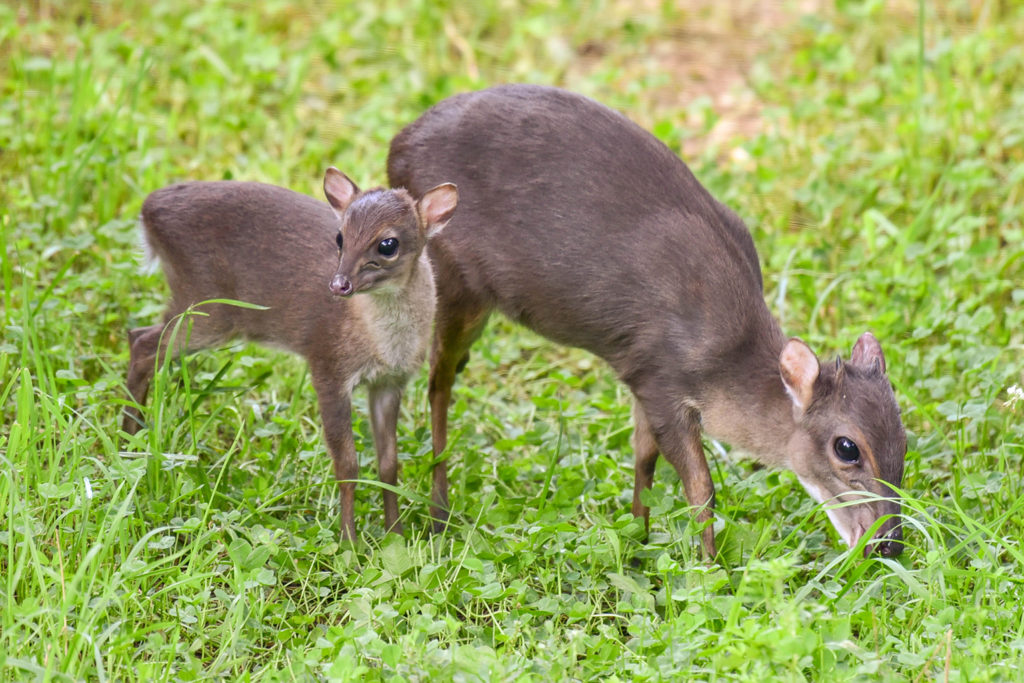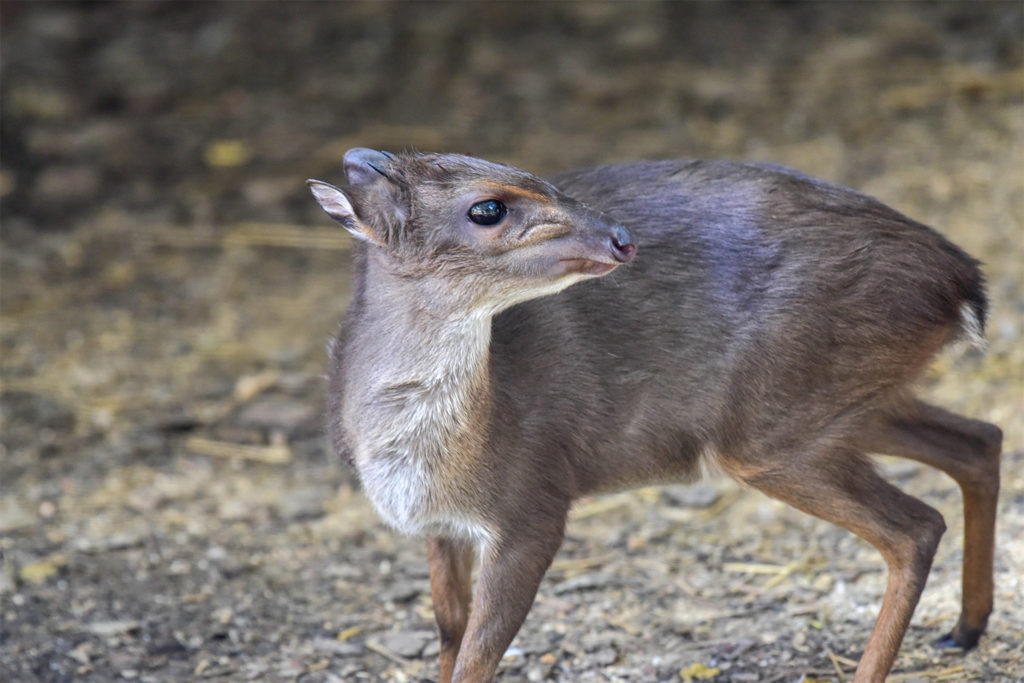Overview
“Where I live”
Blue duikers live throughout central, eastern, and southern Africa. They inhabit a wide variety of forest and woodlands, including lowland rainforest, gallery forest, coastal scrub farmland, dense thicket, and montane forest.
“How I live there”
Blue duikers are forest antelope that spend most of their time foraging for fruit and other plant materials to eat. They are most active at dawn and at dusk. They are known to follow in the wake of monkeys and birds, eating fruit that those animals drop.
Duikers get their name from the Dutch word for “diver” because when disturbed, they tend to dive into dense underbrush and disappear.
Blue duikers form monogamous pairs and stay together throughout the year. Each pair establishes its own small territory that it will defend from other duikers.
“Making my mark”
Here’s a fun fact about duikers: they have the largest brains relative to body size of all antelope.
“What eats me”
Blue duikers are easily preyed upon by many animals, including hyenas, wild dogs, African golden cats, leopards, crocodiles, baboons, pythons…and the list goes on. They also are widely hunted by humans. When threatened, they will sound an alarm cry and flee as quickly as possible.
Raising young
Females give birth once a year on average to a single offspring. Calves can run within hours of birth but do not roam freely for at least the first several weeks of life. Initially, they stay hidden in the underbrush and wait for their mothers to come nurse them. Within a few weeks they join their mothers. They are weaned by 3 months of age and reach full size at about 6 months. Without too much prompting from their parents, calves will leave their home territories between the ages of 1 and 2 years, upon reaching sexual maturity.
Conservation
Blue duikers are threatened by hunting and habitat loss but so far have proven to be a resilient species. They are listed as a species of “least concern” by the IUCN, the world’s leading conservation organization.
Taxonomy
- Kingdom: Animalia
- Phylum: Chordata
- Subphylum: Vertebrata
- Class: Mammalia
- Order: Artiodactyla
- Family: Bovidae
- Genera: Philantomba
- Species: monticola



